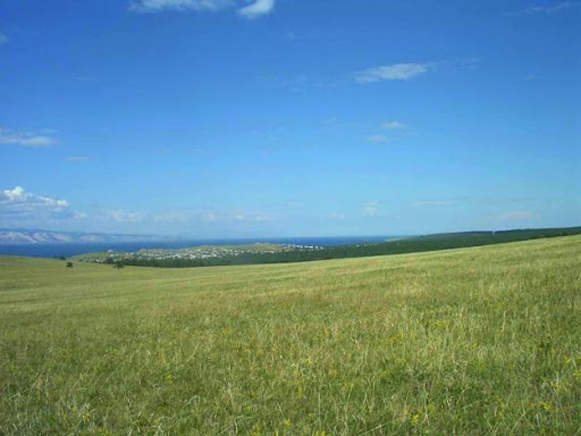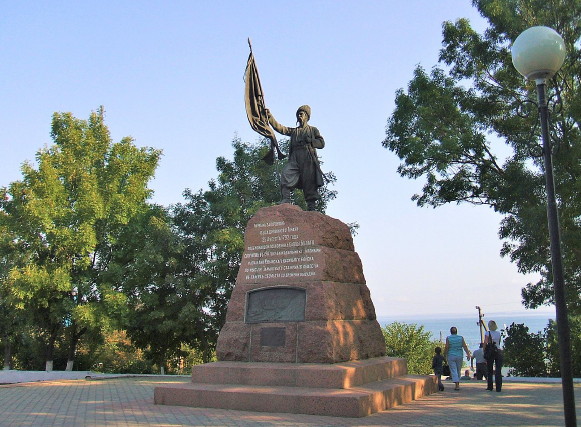Krasnodar krai
Krasnodar krai [Краснодарский край; Krasnodarskyi krai]. An autonomous region of the Russian Federation in northwestern Caucasia, established in September 1937. It has an area of 75,485 sq km and a population (2020) of 5,675,482, 55.35 percent of which is urban. The region is divided into 38 raions and has 11 cities and 21 towns smt. Until 1991 it included within its borders the Adygei Autonomous oblast. The capital city of Krasnodar krai is Krasnodar (2019 pop 918,145). Krasnodar krai extends northward from the Caucasus Mountains across the steppes of Subcaucasia east of the Black Sea and the Sea of Azov as far as Tahanrih Bay. It is separated from Crimea by the Kerch Strait. It borders with Georgia in the south, the Karachai-Cherkess Republic in the southeast, Stavropol krai in the east, and Rostov oblast in the north.
It was established as a separate administrative unit on the basis of the Kuban–Black Sea oblast of the Russian Soviet Federated Socialist Republic, which had been abolished in 1924 and reorganized several times in the 1920s. Its borders were approximately the same as those of the independent Kuban People's Republic (est January 1918) and the Kuban–Black Sea Soviet Republic (est July 1918).
(For the history of Krasnodar krai to 1937 and for a description of its physical geography, see Kuban.)
Population. The inhabitants of Krasnodar krai today are mostly Russians or Russified Ukrainians, but they include Adygeians, Cherkassians, and some Armenians, Belarusians, Greeks, Tatars, and others. The distribution of the population is uneven. The most densely populated areas are the northern part of the Kuban Lowland and the Black Sea coast. The least populated areas are in the higher parts of the Caucasus Mountains. In addition to Krasnodar, other cities with a population of over 100,000 (2019) are Sochi (443,644), Novorossiisk (275,197), and Armavir (190,205). The cities are generally concentrated on the southern edge of the Kuban Lowland and on the Black Sea coast. In 1926 Ukrainians constituted 47 percent of the entire population of the Kuban–Black Sea oblast. However, many of them were forced to flee to Asia or Transcaucasia during the forced collectivization of agriculture in the 1930s. Many others died during the resulting famine. Those who remained were denied national rights (all Ukrainian-language schools, newspapers, institutions, etc were closed) and exposed to continuous Russification. Thus, assimilation and the continual immigration of Russians and people of other nationalities have caused the proportion of Ukrainians in Krasnodar krai to decline steadily. In 1979 approximately 3.9 percent of the population was Ukrainian. In 2019 the official figures listed 1.6 percent of the population of Krasnodar krai to be Ukrainian.
Economy. Krasnodar krai is primarily an agricultural region. Approximately 52 percent of its entire area is farmland. (Approximately 20 percent of the krai’s entire area is covered by forests.) There are two distinct agricultural regions: the Kuban Lowland in the north, where the fertile chernozem steppe supports extensive grain production, and the Black Sea coast with its Mediterranean climate, where fruits are cultivated. The grains produced are winter wheat, winter barley, and corn. Along the lower Kuban River, much of the wetlands has been reclaimed for rice growing. Sunflowers are the most important industrial crop of Krasnodar krai; others include sugar beets and tobacco. Vegetables are grown in the regions along the Kuban River. In the Caucasus foothills, fruit farming (particularly apples, cherries, pears, and apricots) and viticulture prevail. Tea and citrus fruit are grown along the Black Sea coast.
Large numbers of cattle, pigs, and poultry are raised, particularly in the Kuban Lowland. The alpine meadows in the Caucasus Mountains are used for grazing. Fish farming is practiced, and some fur-bearing animals (eg, mink) are kept.
The major industry is food processing. Wine making, including high-quality wines and cognacs (Abrau-Diurso), meat processing (Krasnodar, Armavir, etc), the fishing industry (Yeisk, Temriuk, Novorossiisk), oil pressing (Krasnodar, Kropotkin), and sugar, margarine, tobacco, and tea processing are all developed. Petroleum and natural gas are exploited on the Taman Peninsula and in the north, and refined in Tuapse, Krasnodar, and Afypskyi. Salt, mercury, and other minerals are mined. Manufactured in Krasnodar krai are machine tools (Krasnodar, Maikop), automobile parts (Krasnodar, Armavir, Novorossiisk), transport machines (Tykhoritsk, Novorossiisk), machines for the oil industry (Krasnodar, Armavir), printing machines (Yeisk), and other products. The chemical industry, concrete production (the Novorossisk region), woodworking and furniture manufacturing (Krasnodar, Armavir), as well as wool, cotton, leather, and other branches of light industry (Krasnodar) are developed. Energy for the industry of Krasnodar krai comes from a network of thermoelectric stations using natural gas (Krasnodar), coal (Armavir), and oil (Novorossiisk), as well as a number of hydroelectric stations (Beleoechensk, Krasnopol, and others).
Transportation. The main railway lines are Rostov-na-Donu–Armavir–Adler–Sukhumi and Volgograd–Krasnodar–Novorossiisk. Auto transport is more important on the Black Sea coast. The main highways are Krasnodar–Sochi–Adler and Anapa–Novorossiisk–Tuapse. Boats travel the Kuban River and the coastal waters. The main seaports are Novorossiisk (for the export of grain and concrete), Tuapse (oil products), Sochi, and Anapa on the Black Sea, and Yeisk and Temriuk on the Sea of Azov.
Resorts and tourism. Krasnodar krai is one of the most important resort and tourist regions in the Russian Federation. It has numerous sanatoriums and resorts on the sea coast and in the Caucasus Mountains, often with mineral springs and mud baths. The most important resort region is the Black Sea coast between Tuapse and Adler, centered in Sochi. On the Sea of Azov coast, the largest resort center is Yeisk, with its sulfur-hydrogen mineral springs and mud baths. In the Caucasus Mountains the best-known resort is Goriachii Kliuch. The Caucasus Nature Reserve is located in the southwest corner of Krasnodar krai.
Marko Robert Stech
[This article was updated in 2020.]
.jpg)
.jpg)


